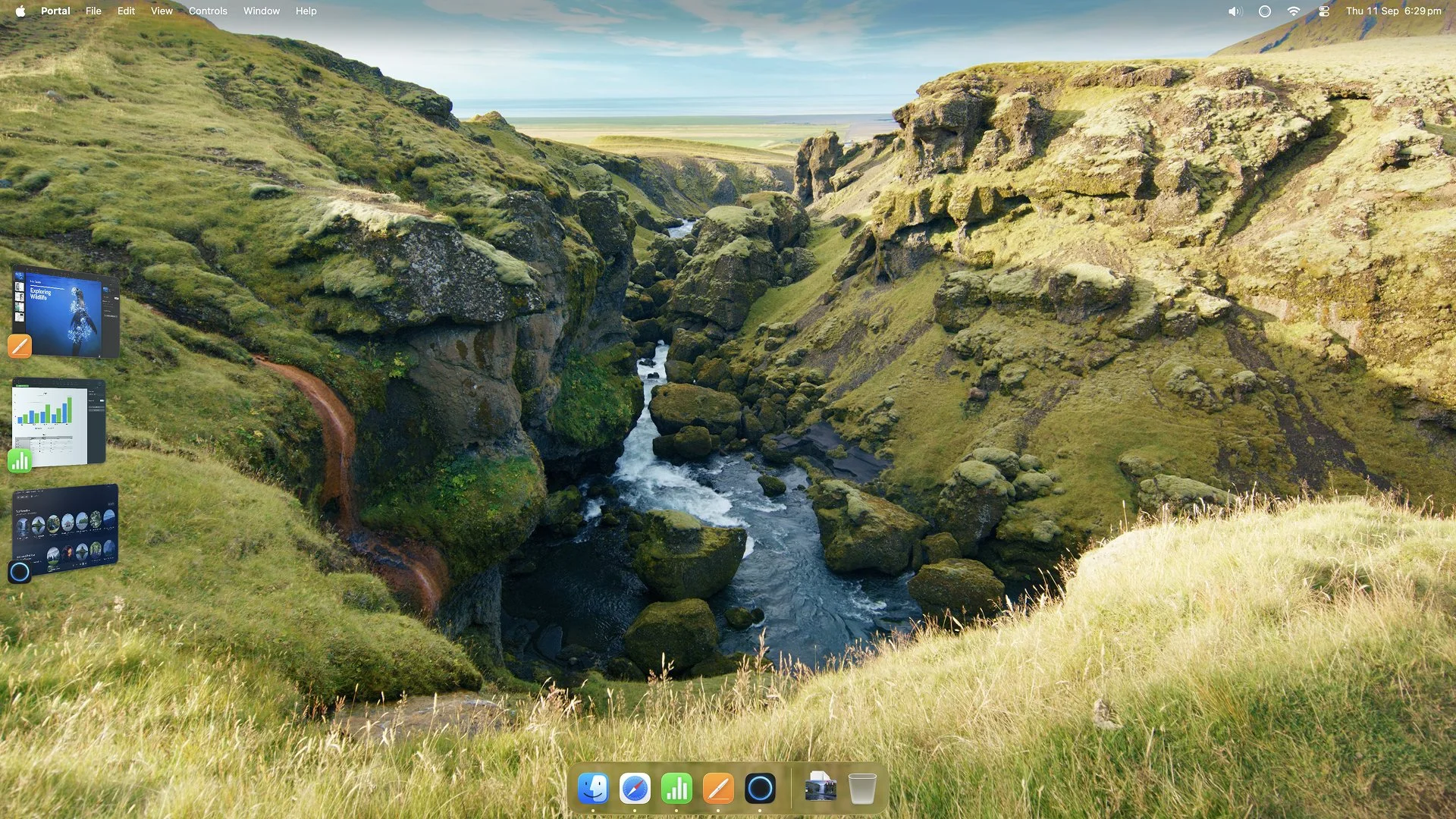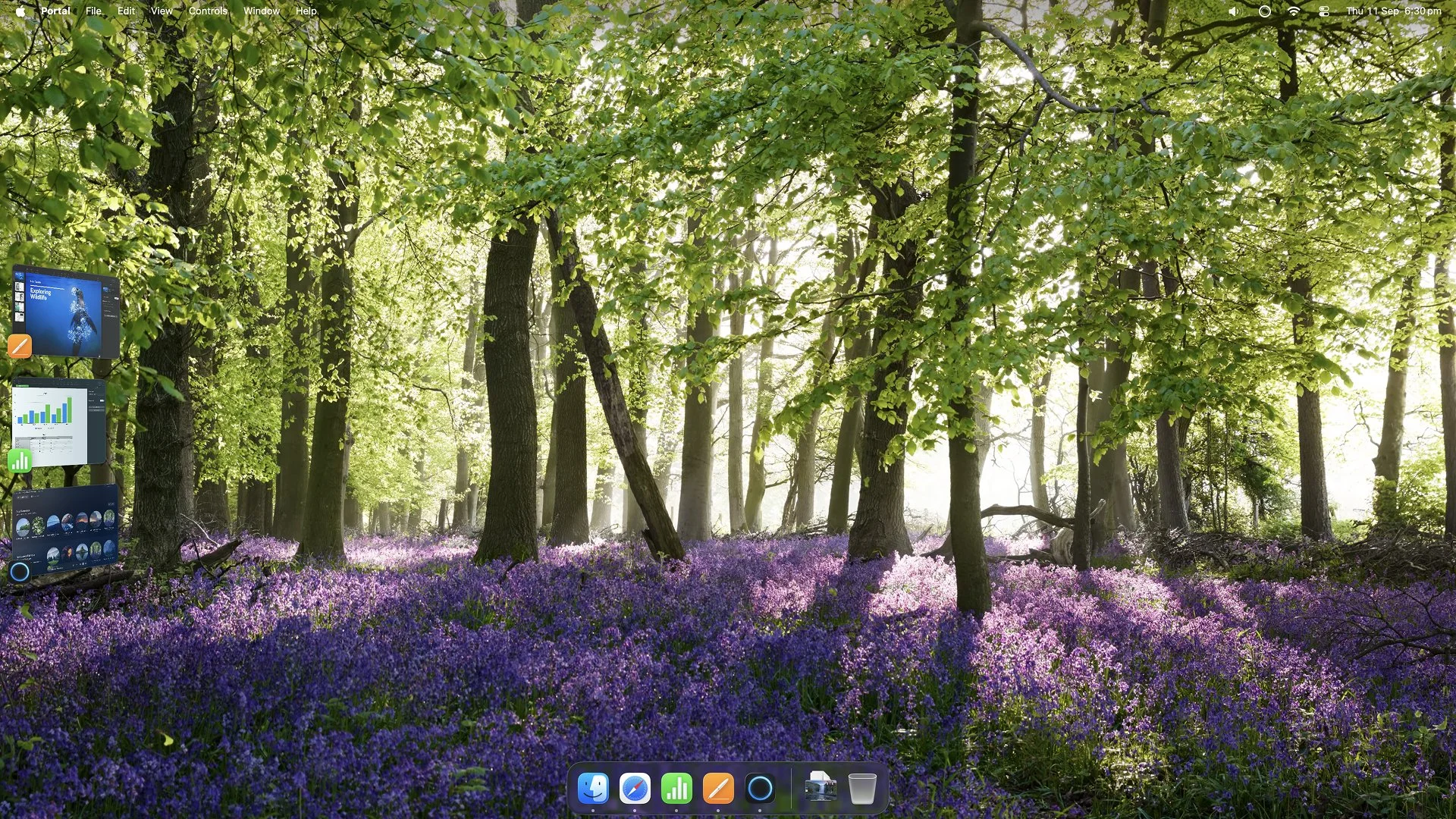Did you know 10 million people watched a single episode of Planet Earth – the same number who visit national parks annually? We're hungry for nature, even if we can't always access it directly.
Imagine escaping the concrete jungle without leaving your desk. What if your smartphone could transport you to a misty bluebell woodland or the thundering heart of an Icelandic volcano? Welcome to the future of nature connection – where technology becomes your gateway to mental restoration. We speak with environmental psychologist Dr Alex Smalley about his research on virtual nature and Tim Daniels co-founder of Portal, both are names to watch in this beautiful revolution in how we experience the natural world.
"We've always tried to bring nature indoors," explains Dr. Alex Smalley. From ancient cave paintings, ancient Roman wall paintings right through to modern digital experiences, humans have always craved a connection to the natural world.
But this isn't about replacing real nature. It's about expanding our understanding of how we can experience it.
For the stressed-out healthcare worker pulling a double shift, the burned-out student cramming for exams, or the city dweller trapped in a windowless office, digital nature offers a lifeline. Scientific research shows these experiences aren't just pretty pictures – they're powerful mental health tools.
Alex’s research is proving that digital nature can actually change how our brains process pain and stress. In clinical studies, people experiencing virtual natural environments reported reduced pain perception and lower stress levels. It's like a mini-vacation for your brain, available at the touch of a button.
Tim, Portal's co-founder, sees something even bigger. "We're not just creating an app," he says. "We're addressing major global crises – from mental health to climate change – by reconnecting people with nature."
For younger generations, digital natives who've grown up with screens, these experiences are revolutionary. Instead of mindless scrolling, imagine using your phone to transport yourself to a dawn chorus, to feel the gentle awakening of a forest, to experience moments of pure wonder.
"These digital experiences can stimulate small bumps of awe," Smalley explains. "They force you to reevaluate your mental frameworks, put your problems in perspective, and feel connected to something bigger."
It's not about replacing real-world experiences. It's about creating bridges, about offering nature as an accessible resource for everyone.
Imagine the possibilities:
- Hospitals using nature sounds to support patient recovery
- Schools using digital landscapes to calm and focus students
- Workplaces offering nature breaks to reduce stress
- Individuals finding moments of peace in their most challenging time
Portal captures nature with breathtaking precision – 8K visuals, spatial audio that makes you feel like you're truly there. A thunderstorm isn't just a sound; it's an experience that can unlock feelings of wonder, reduce stress, and reconnect you with the natural world.
"It's never too late to build a connection to nature," Alex emphasizes. And now, that connection is quite literally in your pocket.
For Tim, it's deeply personal. The platform was inspired by his brother's transformative experience camping in New Zealand – discovering how nature could heal burnout, restore mental health, and provide a sense of wonder.
What if technology could be a force for healing? What if our devices could remind us that we're part of something larger than our daily stress?
It does seem that our world is becoming more urban, more digital, more disconnected, but technology doesn't have to isolate us – it can reconnect us.
A dead hotel TV screen becomes a window to volcanic landscapes. A smartphone transforms into a portal to misty forests. Stress dissolves with the sound of a dawn chorus.
Something that I really liked when I asked Alex how he would paint the world with a magic brush of Biophilia (the question I ask everyone who comes onto the podcast) he said: "I'd paint the world wild and unkempt, with oak saplings emerging from tangles of brambles.” For me, this seemed a perfect metaphor for how digital and natural worlds can coexist and enrich each other.
Your next mental health solution might just be a click away. Are you ready to reconnect?
https://experts.exeter.ac.uk/20047-dr-alex-smalley
https://www.audible.co.uk/pd/Healing-Power-of-Nature-Podcast/B0CLVVLF7T
Have you got a copy of the Journal? You can now subscribe as a member of the Journal of Biophilic Design or purchase a gorgeous coffee table reference copy or PDF download of the Journal journalofbiophilicdesign.comor Amazon and Kindle.
Biophilic Design Conference www.biophilicdesignconference.com
Credits: with thanks to George Harvey Audio Production for the calming biophilic soundscape that backs all of our podcasts.
Listen to our podcast on Audible, Amazon Music, Spotify, iTunes, YouTube and all the RSS feeds.
https://www.facebook.com/journalofbiophilicdesign/
https://twitter.com/JofBiophilicDsn
https://www.linkedin.com/company/journalofbiophilicdesign/
https://www.instagram.com/journalofbiophilicdesign
If you like this,please subscribe!


